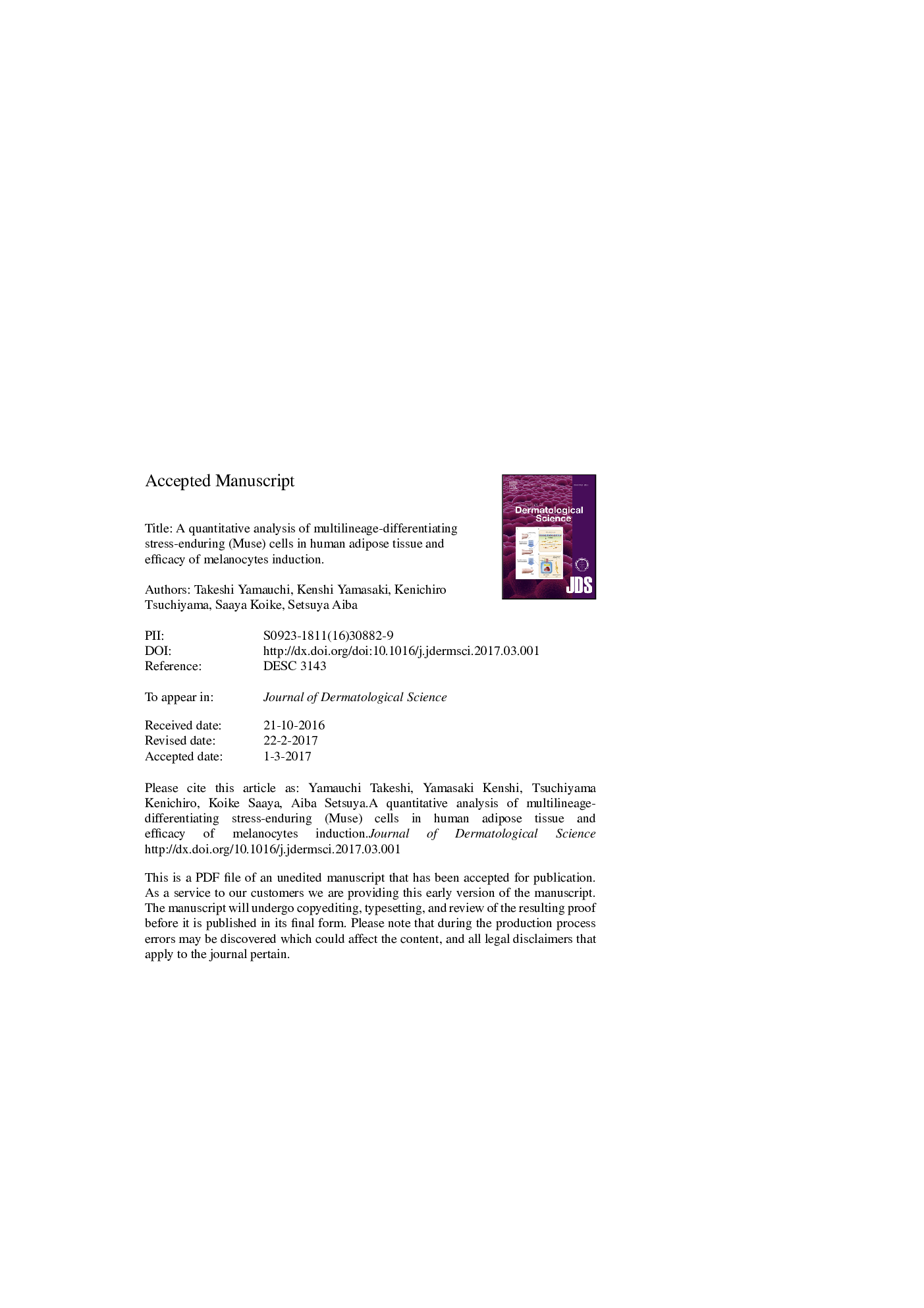| Article ID | Journal | Published Year | Pages | File Type |
|---|---|---|---|---|
| 5648901 | Journal of Dermatological Science | 2017 | 31 Pages |
Abstract
We have shown previously that multilineage-differentiating stress-enduring (Muse) cells in neonatal fibroblasts can differentiate into functional melanocytes. In this study, we quantitate Muse cells in adipose-mesenchymal stem cells (adipose-MSCs) of human subcutaneous tissue obtained from 11 subjects of various ages, and measured efficacy of melanocytes induction from Adipose-MSC-derived Muse cells (hASC-Muse cells). There was a statistically significant negative correlation between the age of donors and the numbers of adipose-MSCs recovered per g fat as well as the percentage of SSEA3+ cells in the adipose-MSC populations, but isolated hASC-Muse cells showed pluripotency and growth curves equally regardless the age of donors. Adipose-Muse cells sequentially expressed melanocyte-related genes including KIT, MITF, TYRP1 PMEL, DCT, melanocortin 1 receptor (MC1R), and TYR at a comparable level to melanocytes during 6-week culture. Parallel with MC1R expression, adipose-Muse cells increased melanin content by α-MSH stimulation. By quantitating the cell numbers recovered at each step, we found that 10 g of adipose tissue could produce at least 2.5 Ã 106 melanocytes after 6 weeks of culture. These studies suggest that induction of melanocytes from adipose-Muse is a novel approach to obtain sufficient numbers of melanocytes for clinical application and in vitro study of melanocyte differentiation.
Related Topics
Health Sciences
Medicine and Dentistry
Dermatology
Authors
Takeshi Yamauchi, Kenshi Yamasaki, Kenichiro Tsuchiyama, Saaya Koike, Setsuya Aiba,
